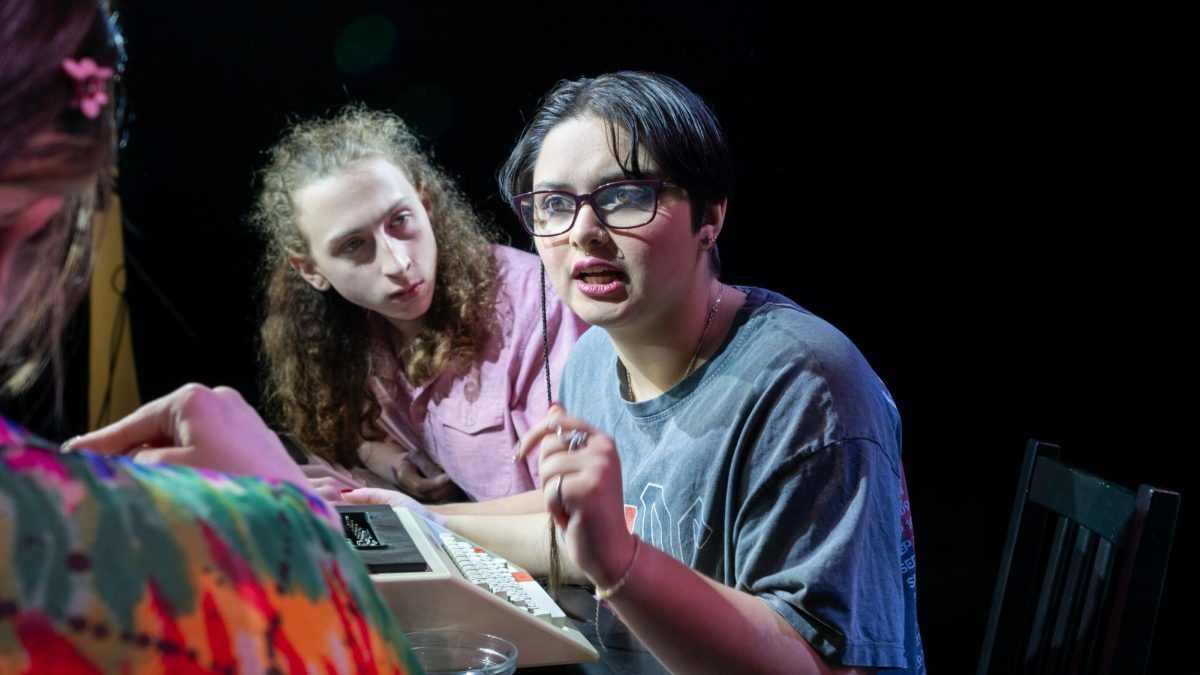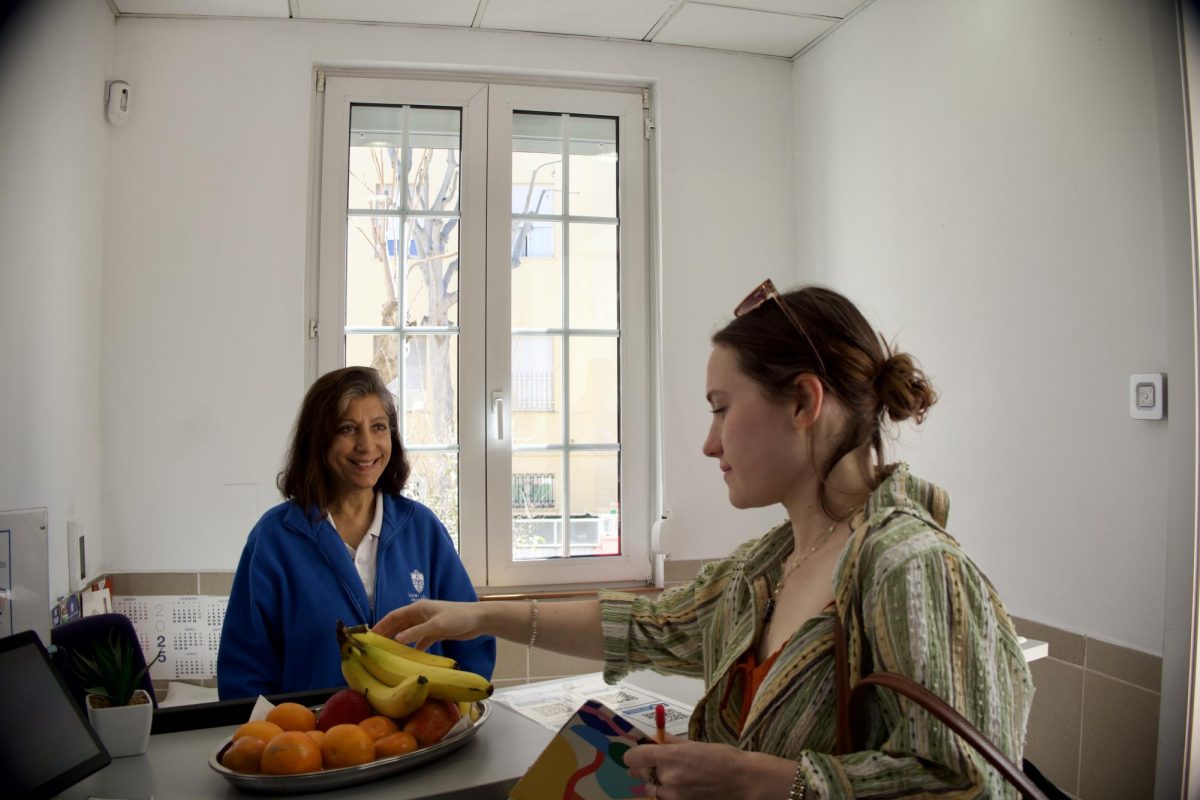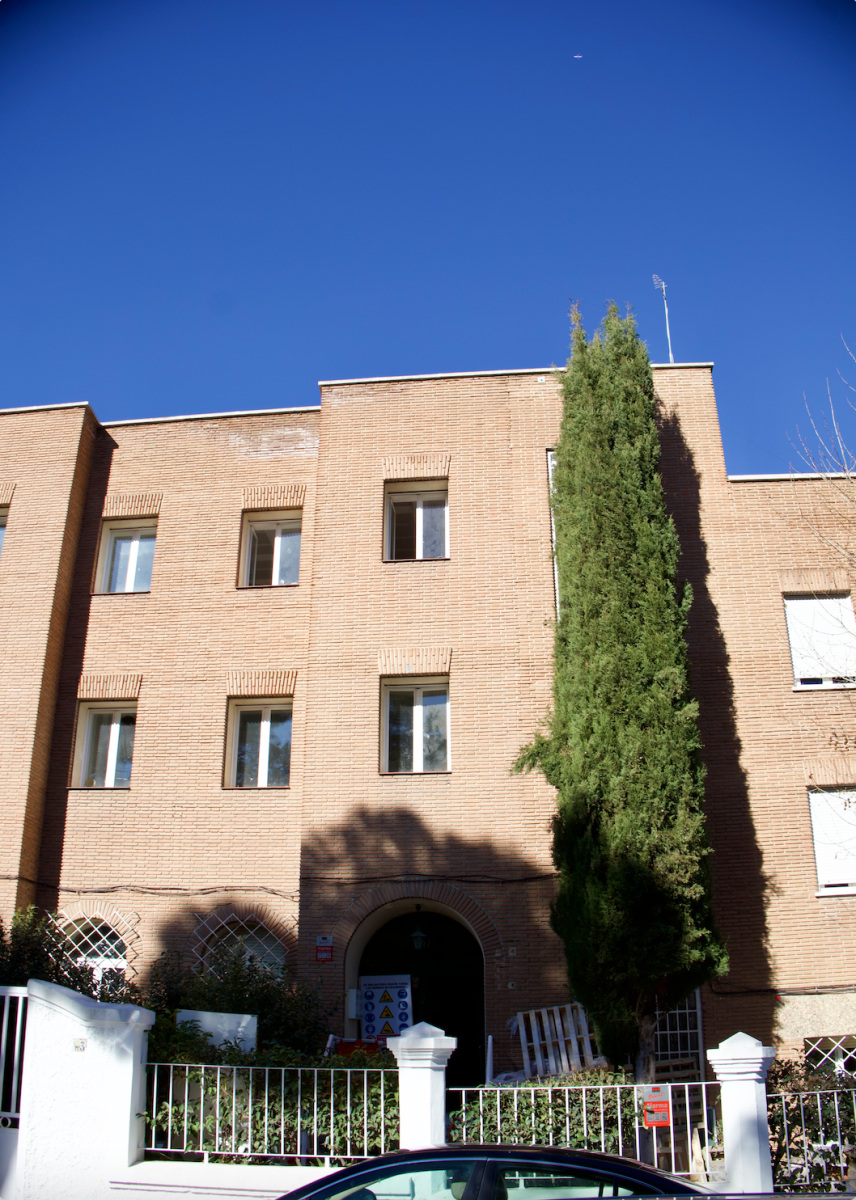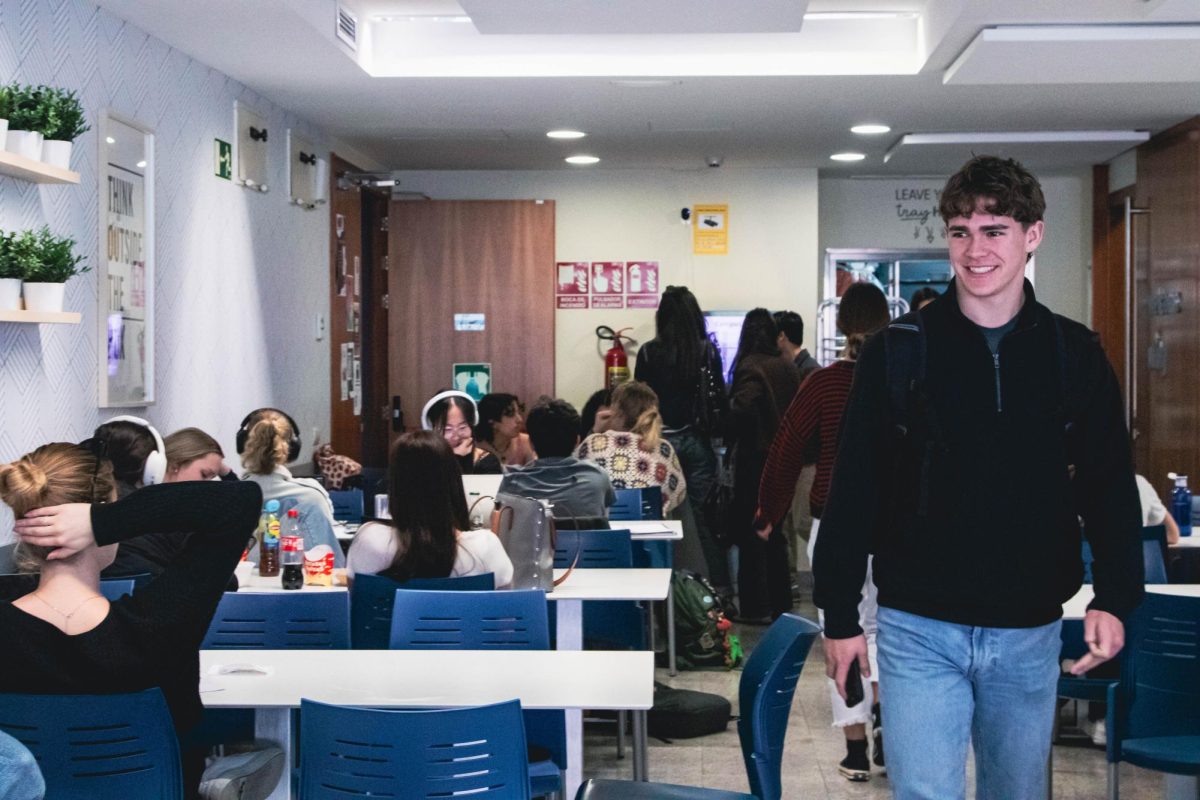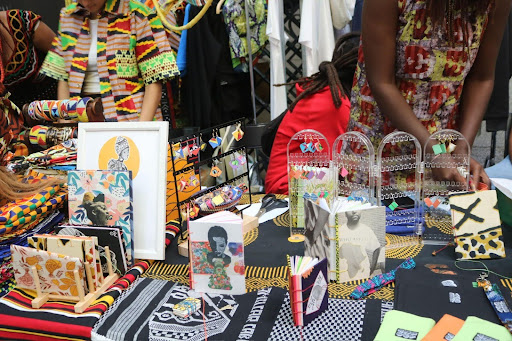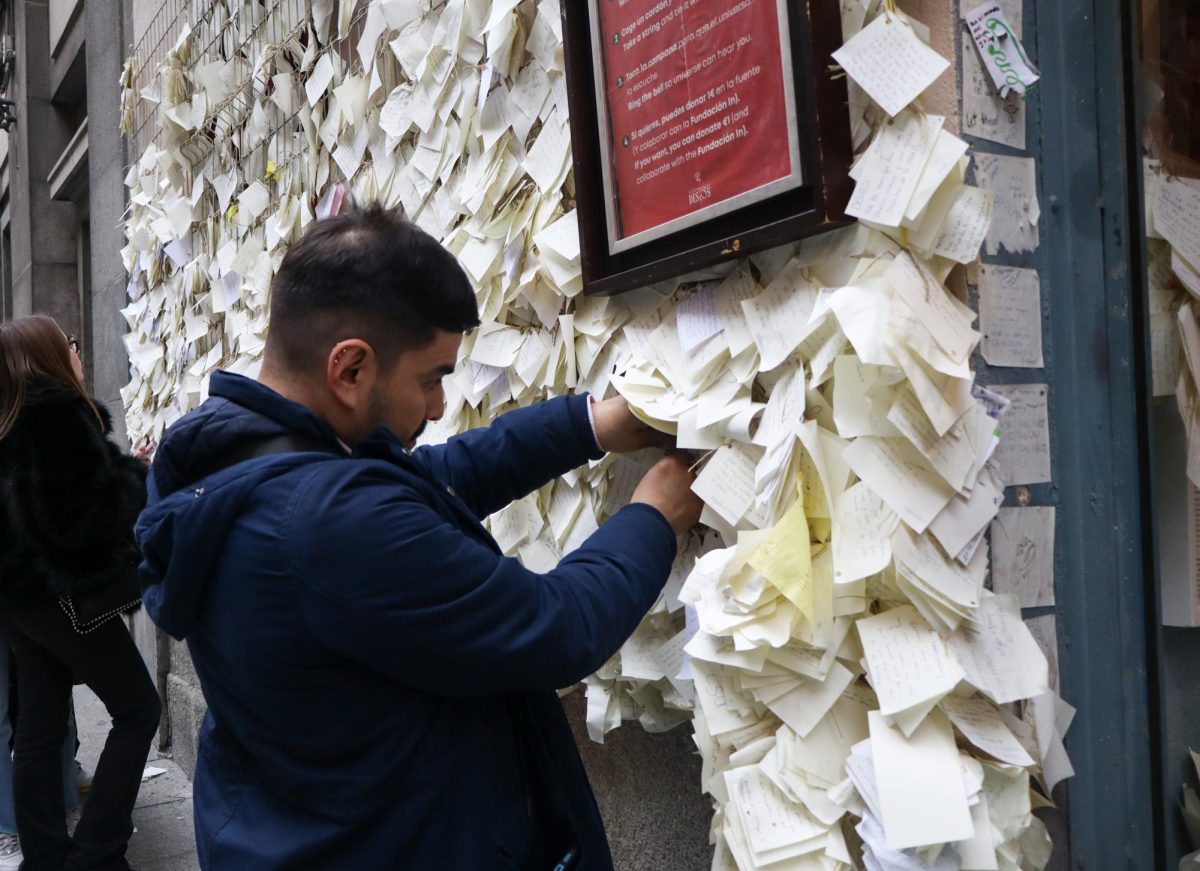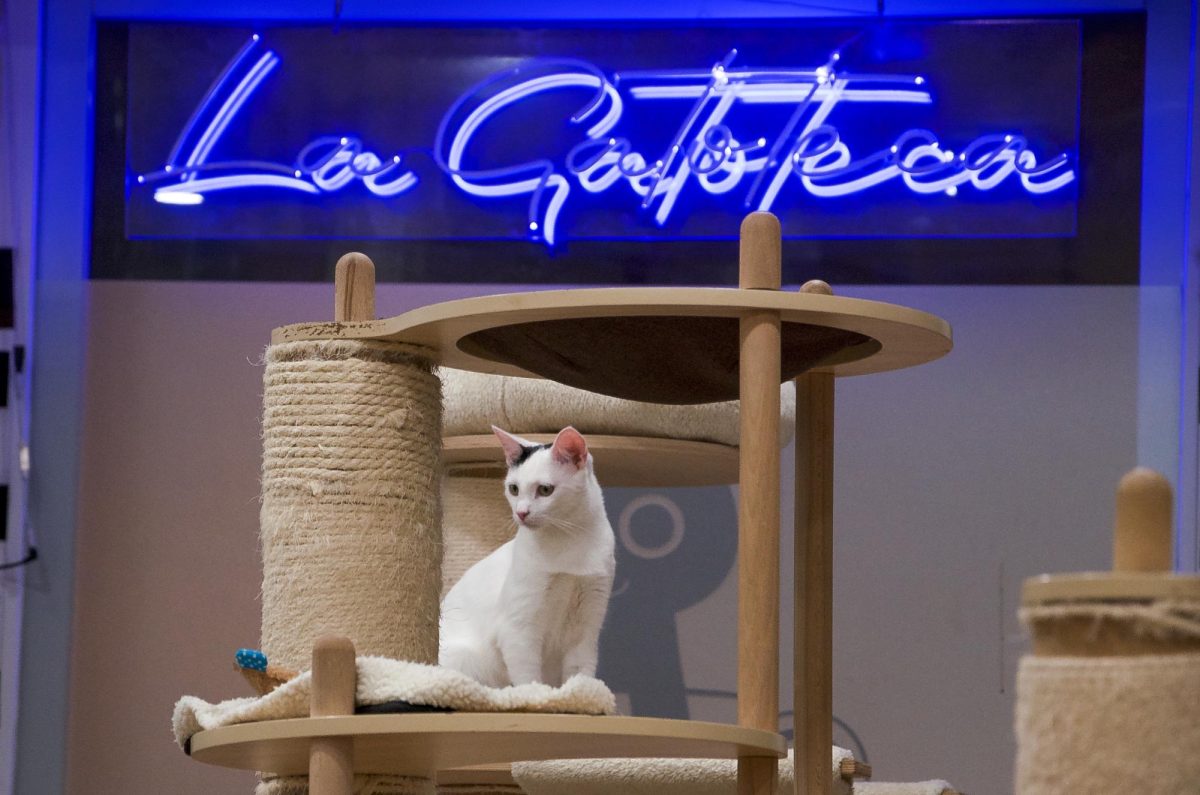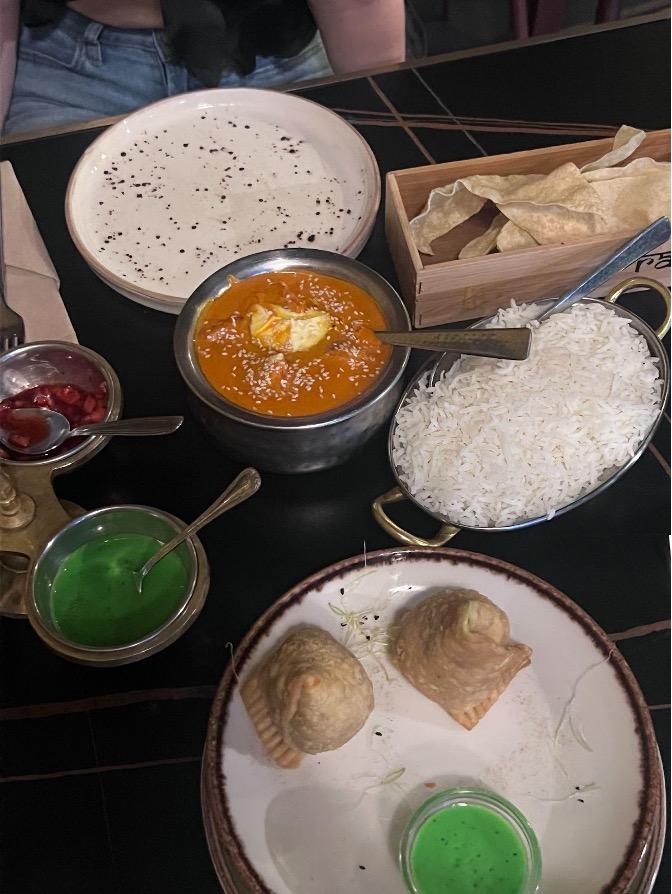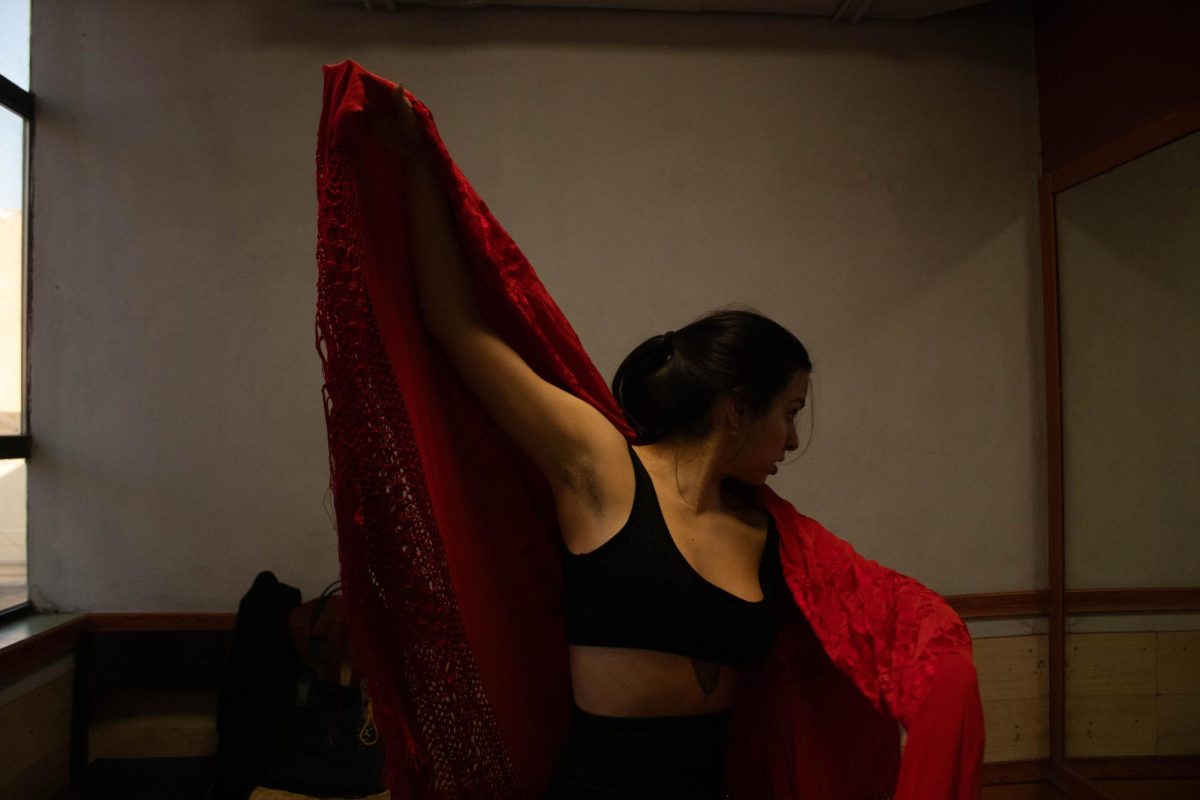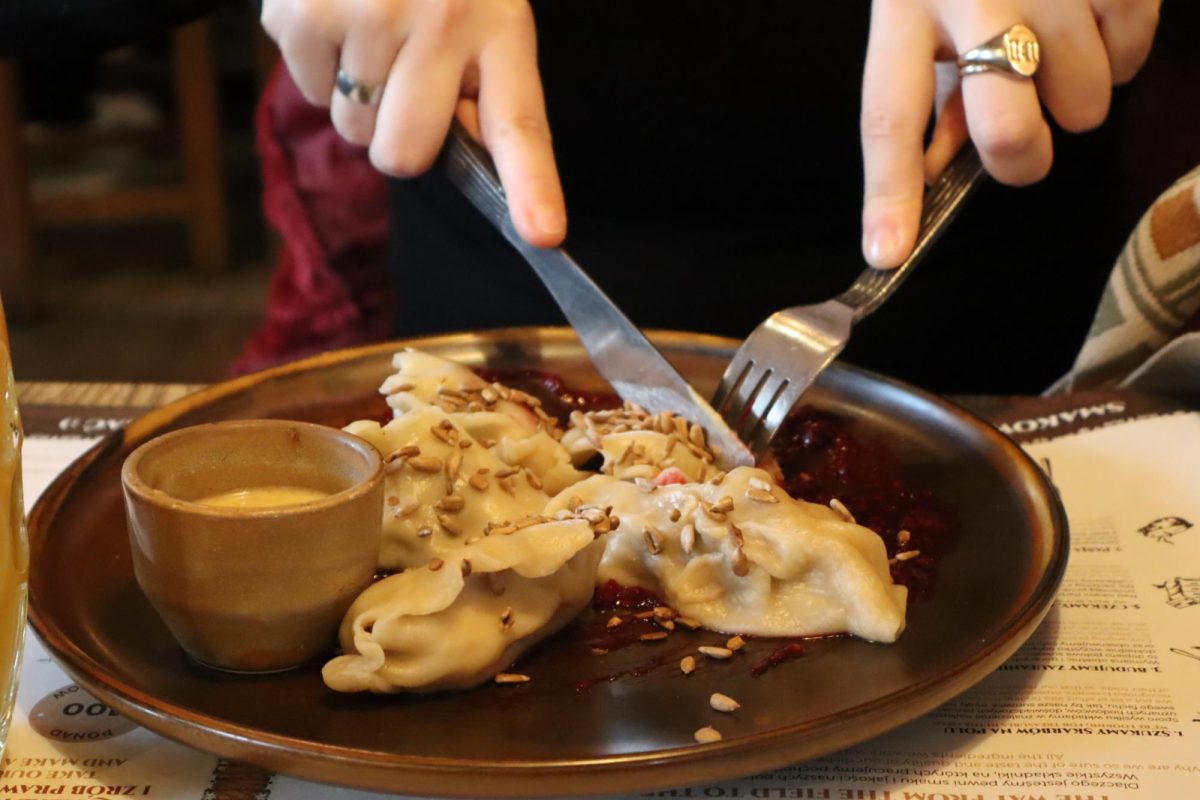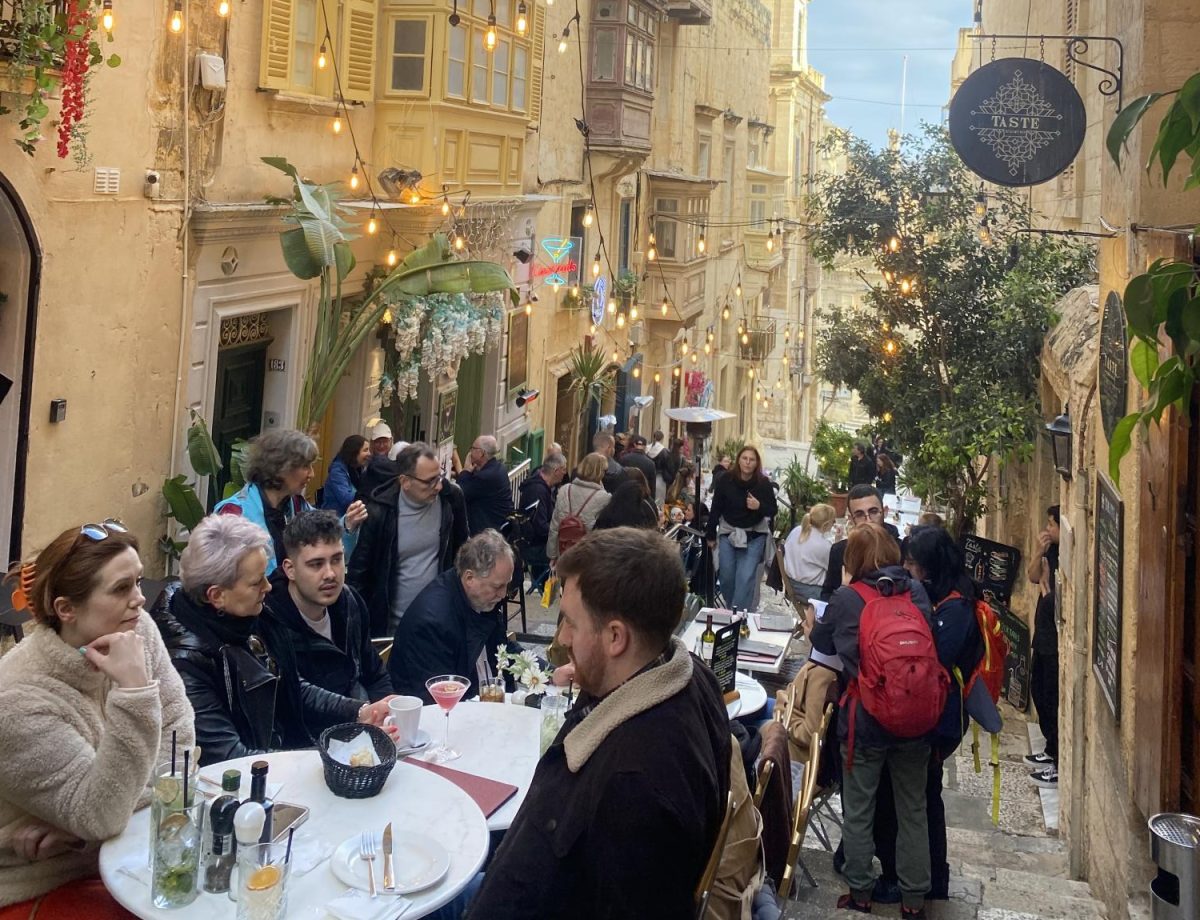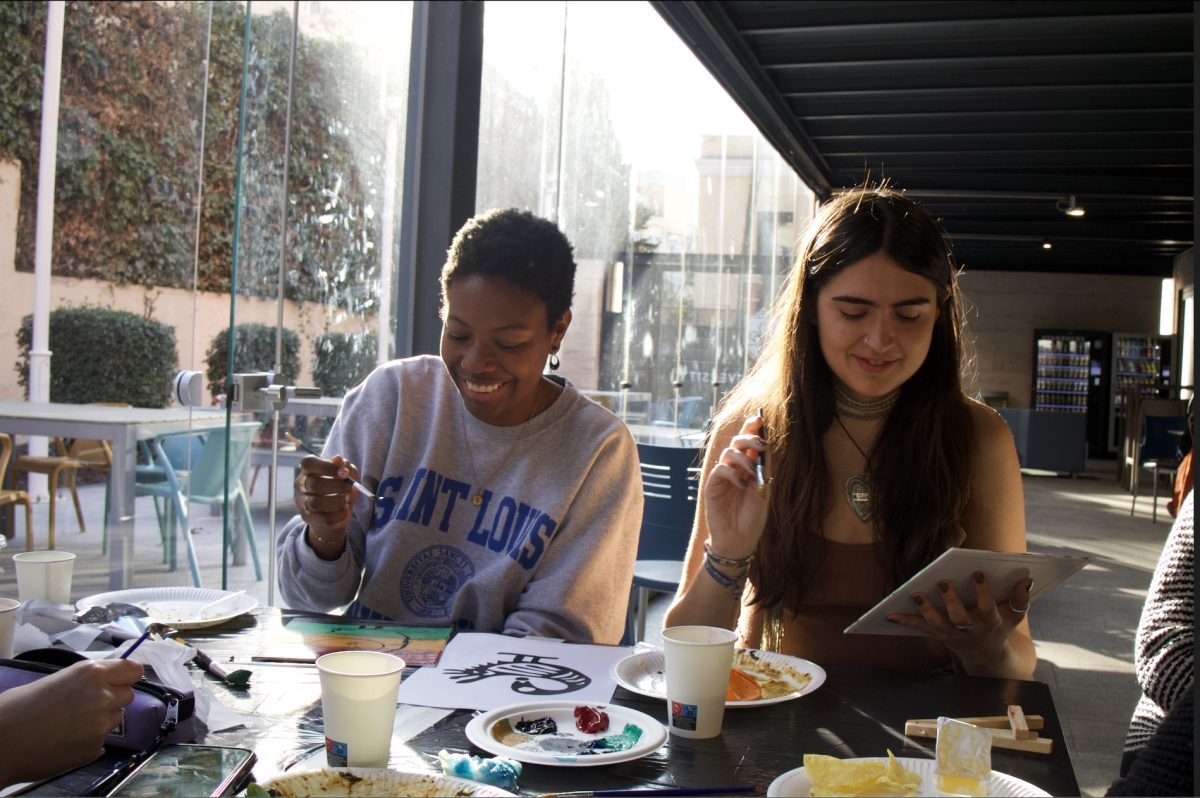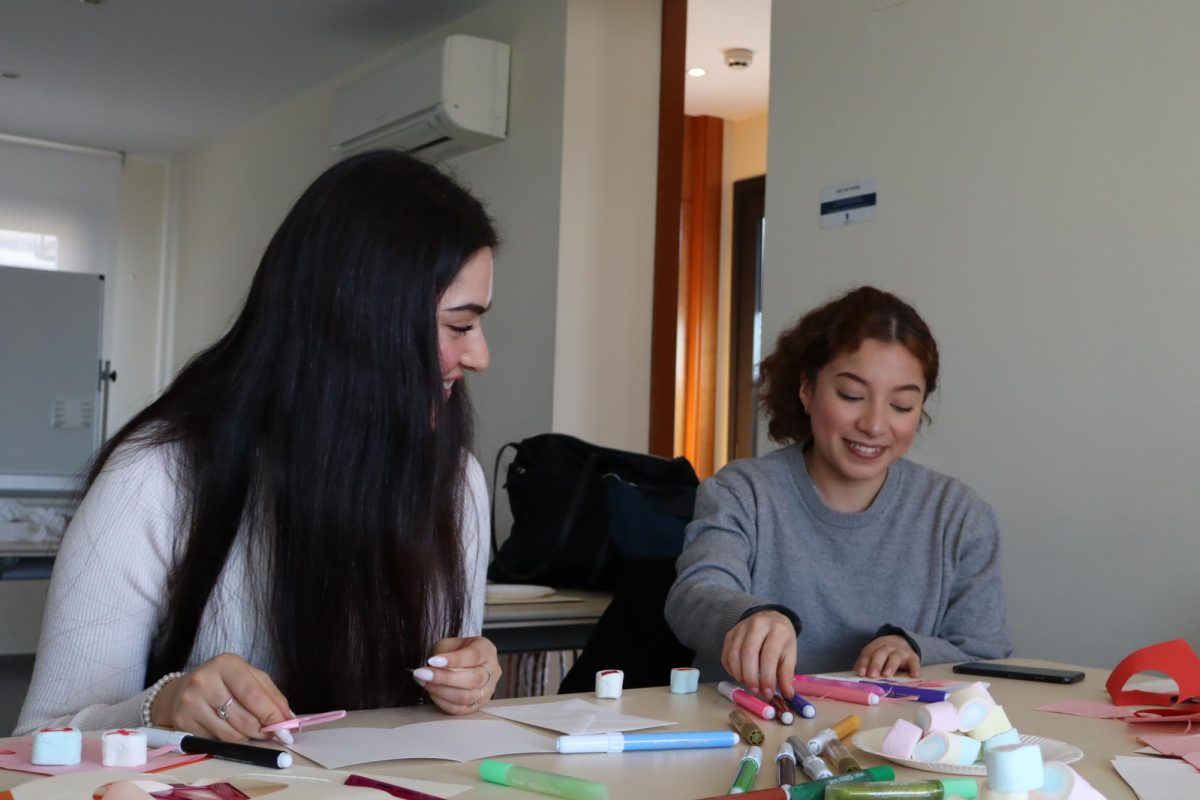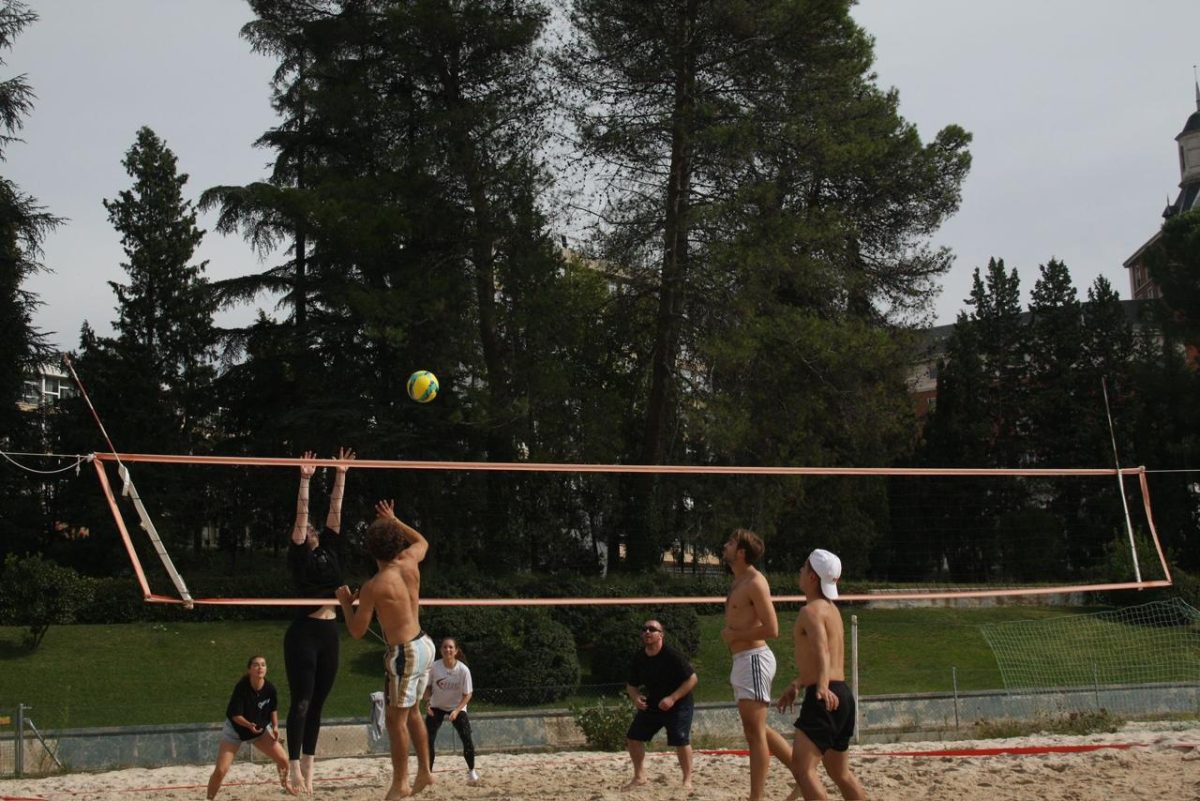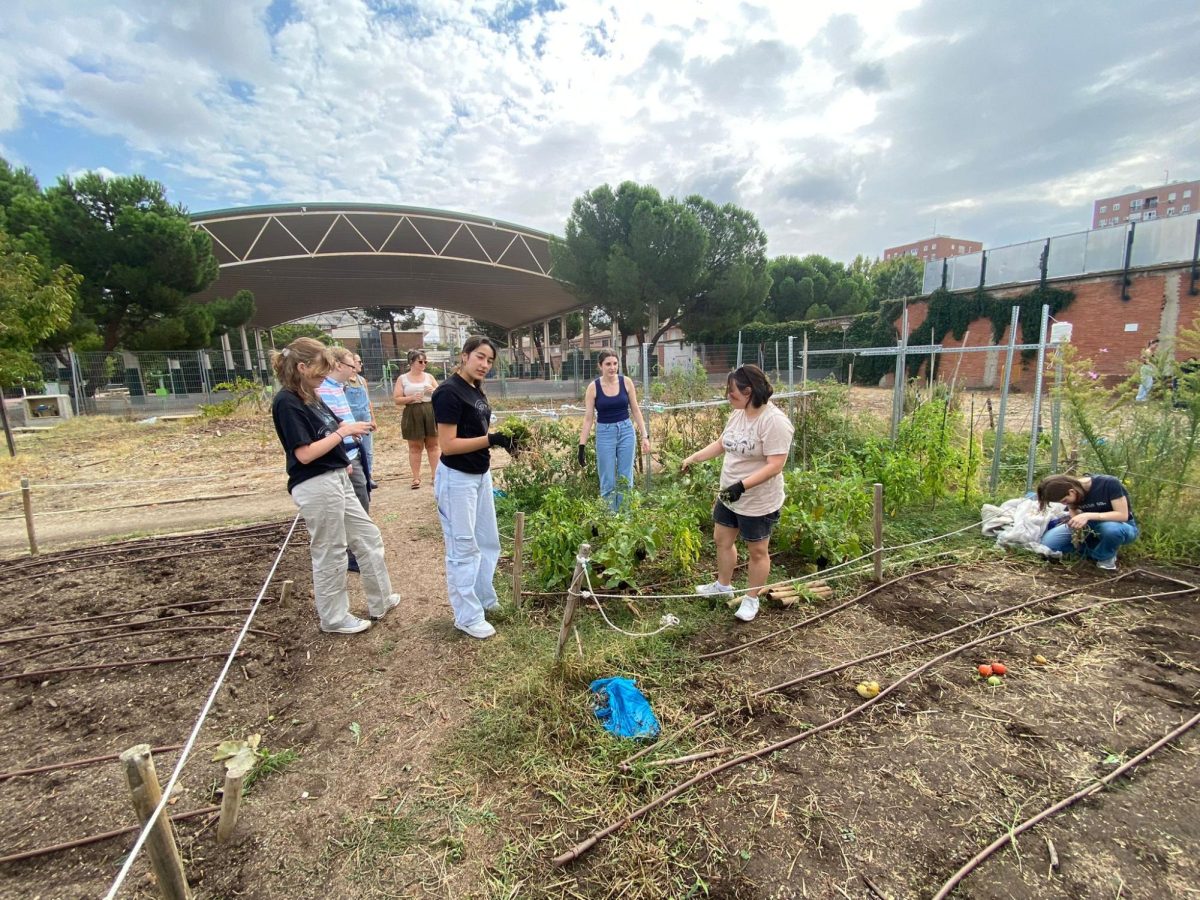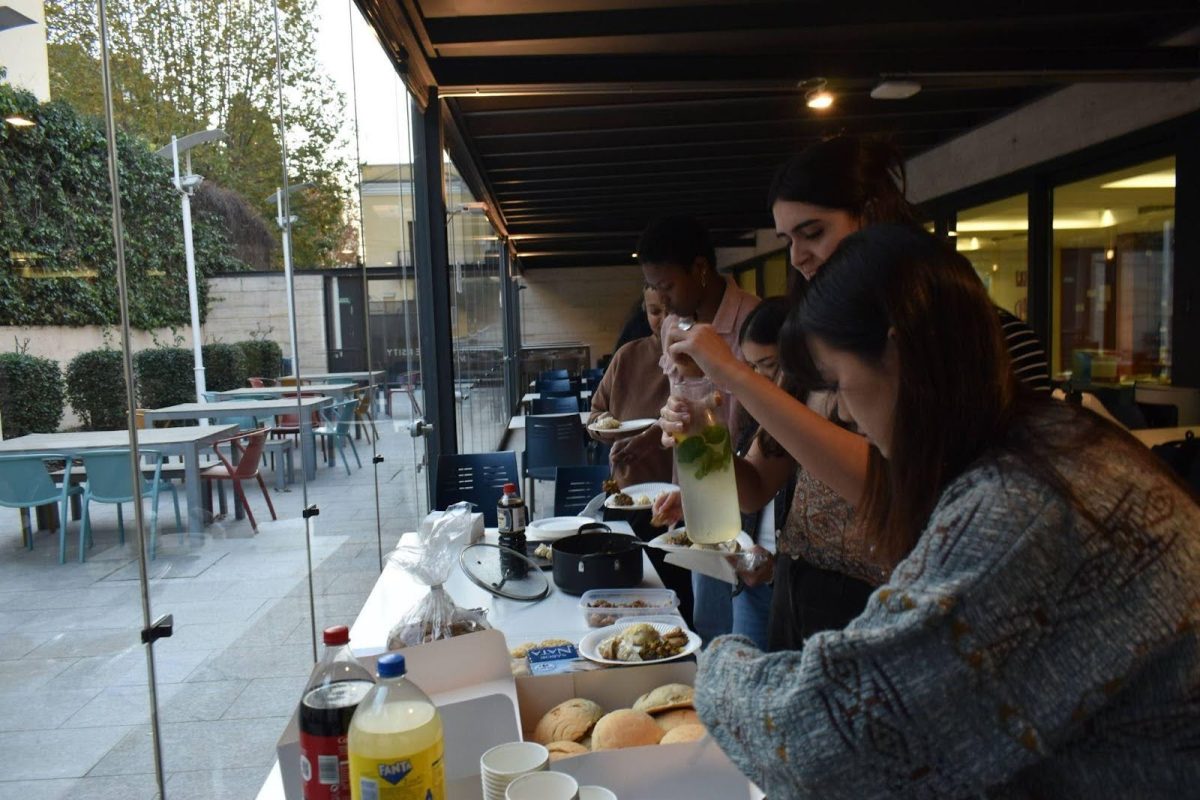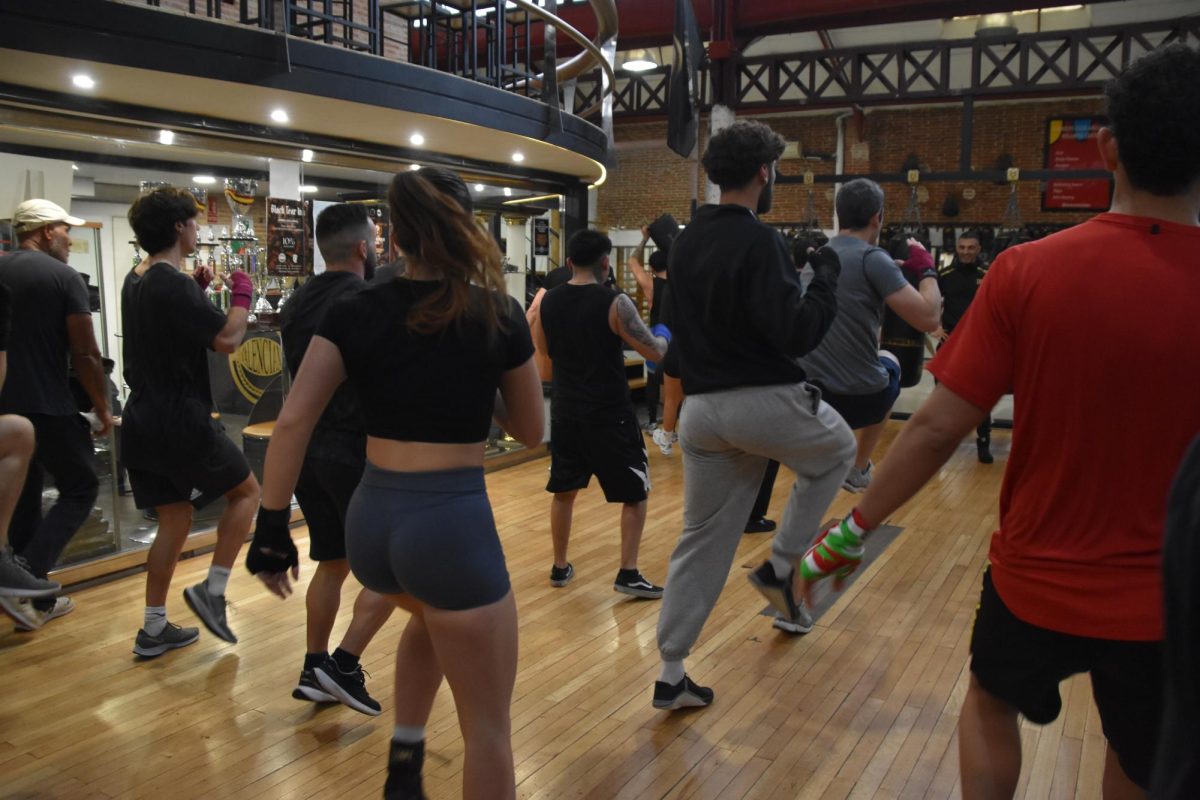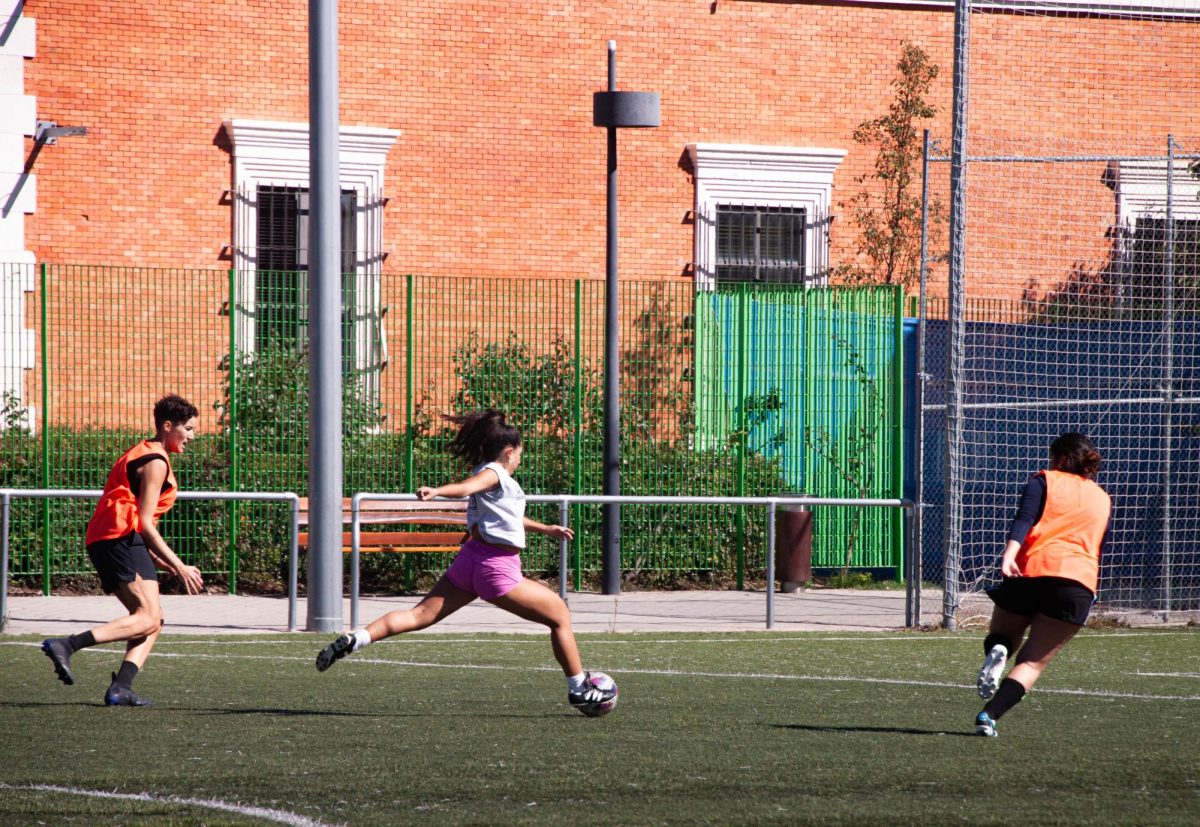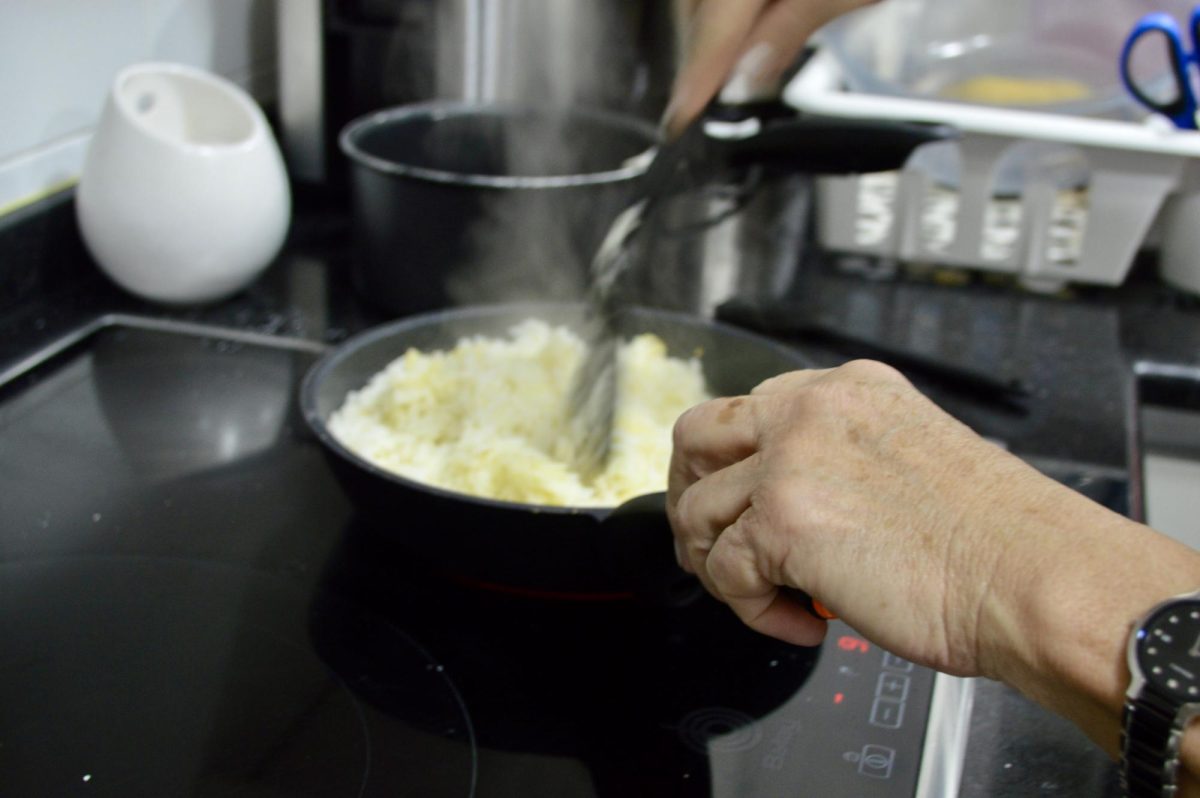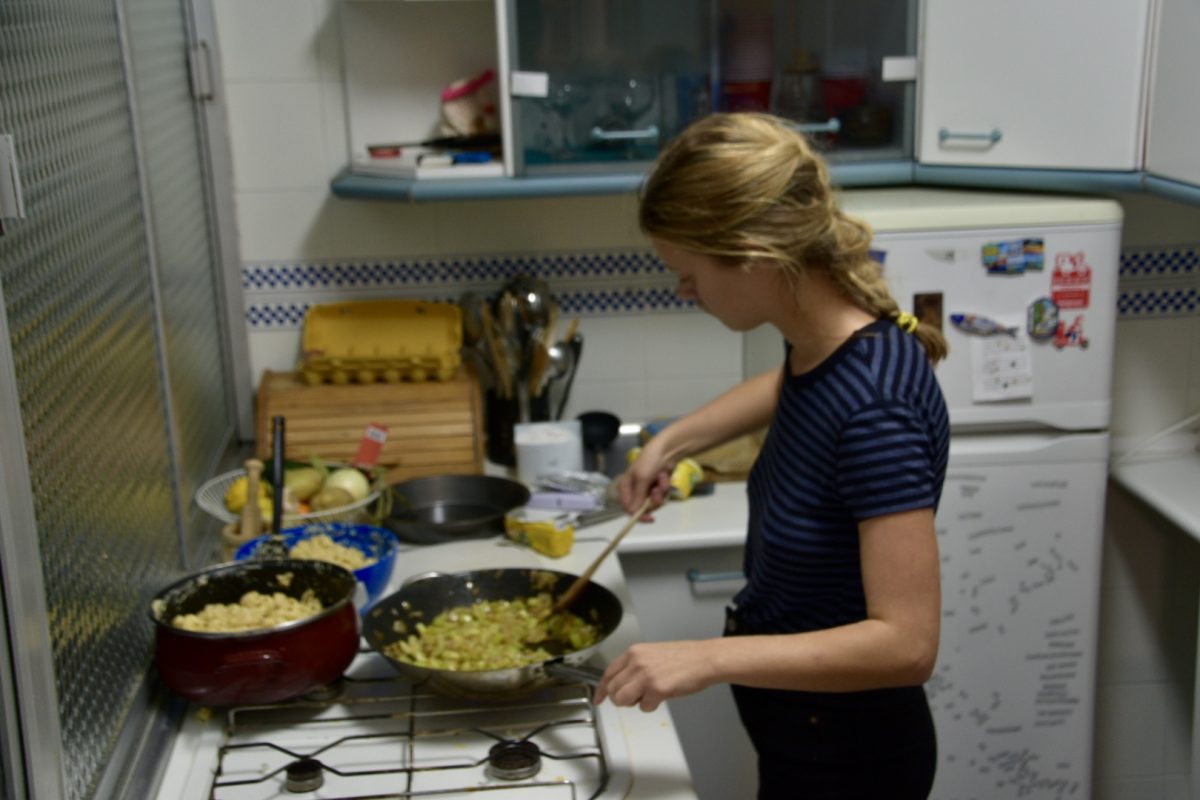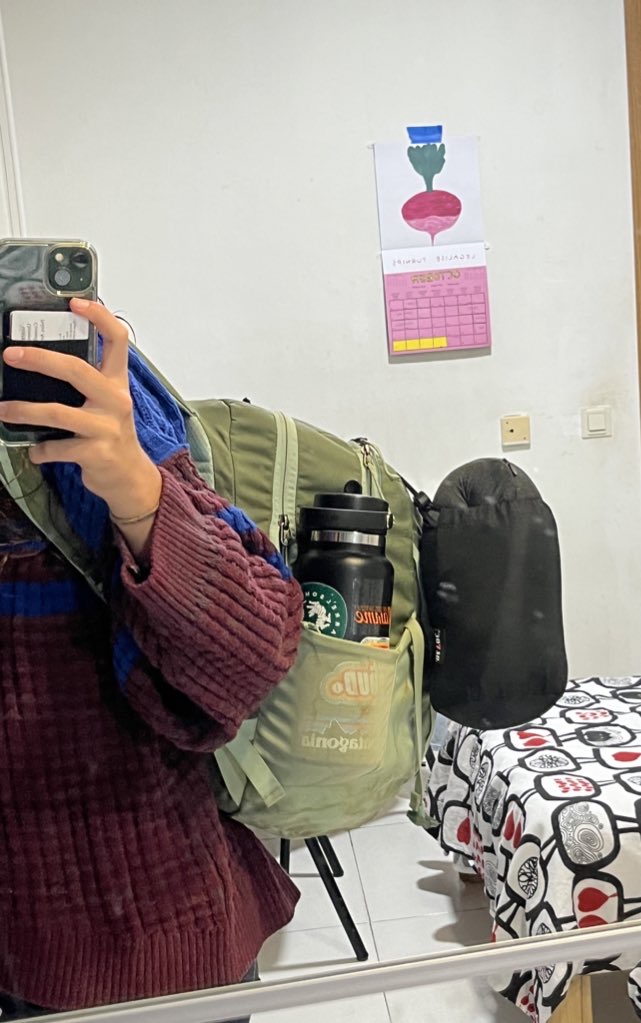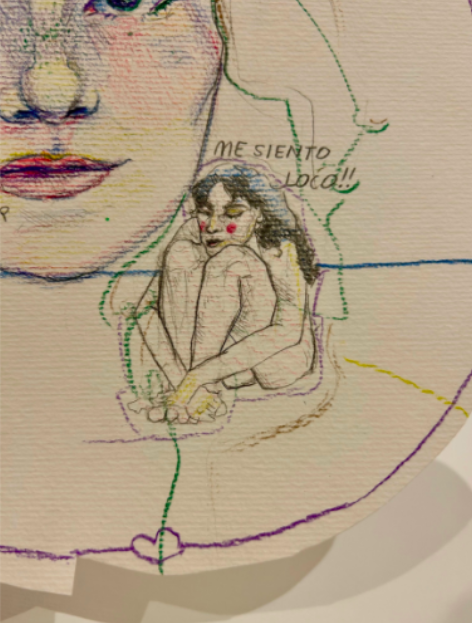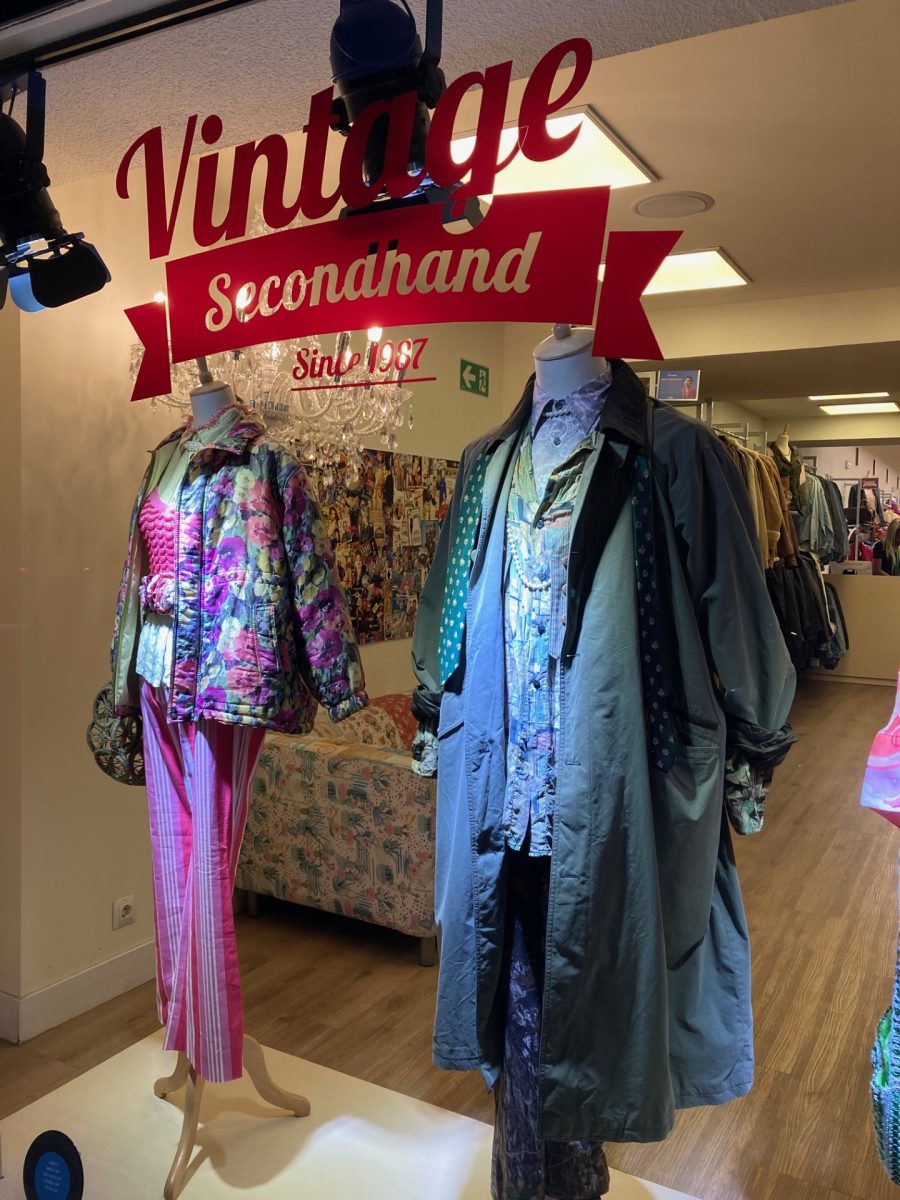Carol Martín, 16, sifts through a rack of timeless skirts ranging in prices from 5 to 10 euros. Martín ventures out to thrift stores at least three times a month, she says, but this is one of her first times in February.
“I always try to come with an open mind, so I am not looking for anything too specific,” she says.
Martín is one of many young Madrileños who have joined the city’s sustainability movement and are increasingly seeking second-hand clothing.
In the heart of the Atocha neighborhood, Humana Vintage is a haven for those looking for one-of-a-kind finds and where enthusiasts of all things vintage can be found. The passionate beats of the ‘80s fill the air as soon as you enter Humana Vintage. Bright yellow signs on each rack read “todos a 4 euros” above the patterns and designs from different eras. The tune of the Beatles’ “Eleanor Rigby” fills the air, as young girls and boys look at denim skirts and vintage soccer jerseys, and elderly women eye colorful satin cloths and coats lined in faux fur.
Humana is the most ubiquitous thrift chain found here in Madrid with a total of 27 stores, according to their official website. The total number of second-hand stores in Madrid is hard to find because they seldom advertise – unlike popular retail brands like Zara and Mango.
Rubén González, head of Humana’s communications department, said the organization has a network of 5,200 containers distributed throughout much of Spain, into which, in 2022, more than 2.5 million donors have deposited nearly 18,000 tons of textile.
“The textile undergoes a preparation process for reuse in the plants we have in Madrid and Barcelona,” González said. “The garments in the best condition are destined for our secondhand fashion stores, where last year we registered 2.4 million customers, who purchased 6.2 million items, including clothing, footwear, accessories, and home textiles.”
According to the Humana website, the process promotes sustainability, creates jobs and raises money for international development programs.
Andrea Delascasas. a SLU-Madrid student, enjoys the bargains, pointing out a pair of plaid Mango pants for 7 euros or Ralph Lauren sweaters for 15 euros.
Delascasas found it difficult to obtain affordable and size-appropriate apparel in Madrid’s retail stores. “When I go to Zara or H&M or whatever, sometimes they don’t have my size or sometimes the prices are absurd,” she said.
On a recent spring day, Madrid native Adriana Alino, 14, was searching for new Nike workout pants at Magpie Vintage on Calle de Velarde. She discovered her love for thrifting when trying on “ugly clothes” with friends, she said. The humorous hobby turned into a passion for old items.
“It is something that is underrated here but me and my friends go almost every weekend,” she said.
In one of her outings, Alino’s friend unintentionally broke several buttons while trying on a coat with fur lining, a small mistake with lasting effects:
“It was only 10 euros, and she doesn’t even wear it now,” Alino said.
Not all students enjoy thrifiting. Federico Tarin, a student at CEU San Pablo, has never found thrift stores to be appealing. He tends to shop online, which has gained popularity in recent years — especially in light of the COVID-19 pandemic — or visit popular retail stores like Scuffers and North Face. He does not frequent El Rastro. “I think that thrift shopping is great, but it’s just something I’m not into,” Tarin said.
Another CEU San Pablo, Laura Puente, feels similarly. “I usually look online for inspiration,” she said. Or she might pay in-person visits to some of her favorite retailers, such as Massimo Ziti and Mango, “I am very simple,” she said, adding that her thrifting friends are generally creative and have a passion for fashion.
Annabelle Pitman-Fulford, a study abroad student, realized that when she shops at retail stores, she isn’t necessarily buying clothes that make her happy. Instead, she is often influenced by trends and the opinions of others. However, when she purchases vintage clothes, she feels much better about her choices. She recalled her most recent thrift find, a fur-lined brown trench coat, and how confident and stylish the jacket made her feel. She also realized that not only is the quality often better, but she knows that she is also buying something that won’t go to waste. “I just love it [thrift shopping] because it allows you to buy clothes for yourself instead of dressing for the masses,” Pitman-Fulford said.
